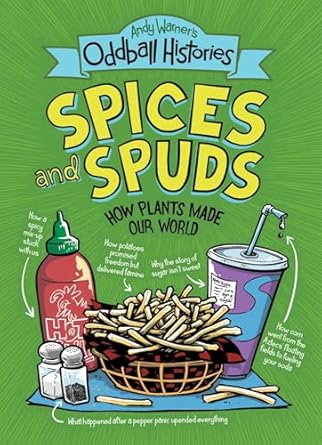2018 School Spending Survey Report
Spices and Spuds: How Plants Made Our World
Little, Brown Ink.
(Andy Warner’s Oddball Histories: Bk. 2).
Nov. 2024.
248p.
Tr $24.99. ISBN 9780316498265.
COPY ISBN
VERDICT An introduction to plants as crops that entertains as well as it educates. A helpful purchase for covering changes over time and the interdependence of trade and agriculture.
ALREADY A SUBSCRIBER? LOG IN
We are currently offering this content for free. Sign up now to activate your personal profile, where you can save articles for future viewing





Be the first reader to comment.
Comment Policy:
Comment should not be empty !!!